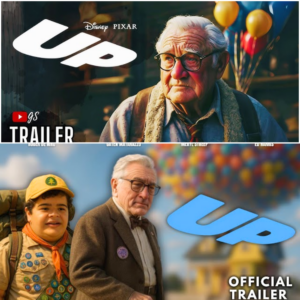Netflix’s The Sandman, adapted from Neil Gaiman’s seminal comic book series, has captivated audiences with its intricate storytelling, surreal visuals, and profound exploration of human and divine experiences. Launched in August 2022, the series follows Dream, also known as Morpheus, the personification of dreams, as he navigates the consequences of his century-long imprisonment and seeks to restore his realm, the Dreaming. Despite critical acclaim and a dedicated fanbase, Netflix announced in 2025 that the series would conclude with its second season, leaving fans and critics alike pondering the future of this ambitious fantasy saga. In recent interviews, showrunner Allan Heinberg has addressed the cancellation and hinted at potential avenues for continuing the story, sparking renewed hope among fans. This article provides a detailed analysis of The Sandman’s narrative, themes, and cultural impact, followed by an exploration of Heinberg’s comments on the possibility of a future for the series.
Narrative and Thematic Depth
The Sandman is a masterclass in adapting a complex, sprawling source material into a cohesive television narrative. The first season, covering Preludes & Nocturnes, The Doll’s House, and parts of Dream Country, introduced viewers to Dream (Tom Sturridge), a brooding yet evolving cosmic entity who governs the realm of dreams. After escaping decades of captivity, Dream embarks on a quest to reclaim his stolen artifacts—his helm, ruby, and sand pouch—while confronting the ripple effects of his absence on both the Dreaming and the waking world. The second season, released in two volumes in July 2025, adapts Season of Mists, Brief Lives, The Kindly Ones, and concludes with a bonus episode based on Death: The High Cost of Living. This season delves deeper into Dream’s relationships with his siblings, the Endless, and explores themes of sacrifice, redemption, and transformation.
The narrative structure of The Sandman is both episodic and serialized, blending standalone stories with an overarching arc centered on Dream’s emotional and moral growth. For instance, the episode “The Sound of Her Wings” in Season 1 juxtaposes Dream’s melancholic perspective with his sister Death’s (Kirby Howell-Baptiste) compassionate approach to mortality, offering a poignant meditation on life’s meaning. Similarly, Season 2’s “The Song of Orpheus” adapts the tragic myth of Dream’s son, Orpheus, whose death at the hands of the Furies sets the stage for Dream’s eventual sacrifice. These episodes showcase the series’ ability to weave mythology, literature, and philosophy into a visually stunning tapestry.
Thematically, The Sandman grapples with universal questions about identity, responsibility, and change. Dream’s journey from an aloof, rule-bound deity to a figure capable of self-sacrifice reflects the series’ core thesis: even eternal beings can evolve. The show also explores the interplay between free will and destiny, particularly through characters like Rose Walker (Vanesu Samunyai), a dream vortex whose actions challenge Dream’s authority. Additionally, the series’ progressive values—evident in its diverse casting and LGBTQIA+ representation—align with Gaiman’s original comics, which were groundbreaking for their inclusivity in the late 1980s and 1990s. However, some critics argue that the adaptation’s streamlined narrative sacrifices the comics’ anthological richness, a point Heinberg has acknowledged as a necessary compromise for television.
Visual and Performative Excellence
Visually, The Sandman is a triumph, with its dreamlike aesthetic and meticulous production design. The Dreaming is depicted as a shifting, ethereal landscape, with palaces that morph to reflect Dream’s mood. Hell, ruled by Lucifer (Gwendoline Christie), is a stark, fiery contrast, while the waking world blends gritty realism with surreal flourishes. The series’ costumes, sound design, and cinematography enhance its immersive quality, earning praise from reviewers like Karama Horne of TheWrap, who called it “visually stunning.”
The cast delivers standout performances, with Tom Sturridge embodying Dream’s ethereal gravitas and subtle vulnerability. Kirby Howell-Baptiste’s Death is a fan favorite, bringing warmth and wisdom to a character beloved by comic readers. Gwendoline Christie’s Lucifer and Jenna Coleman’s Johanna Constantine add layers of menace and charisma, respectively. However, some critics, such as Brian Lowry of CNN, noted that the “dream-like storytelling” occasionally blunts the performances due to its fragmented structure. Despite these critiques, the ensemble’s chemistry and commitment to Gaiman’s vision anchor the series.
Cultural Impact and Reception
The Sandman has left an indelible mark on the fantasy genre, both as a comic and a television series. Gaiman’s original work redefined graphic novels by blending literary depth with genre storytelling, influencing creators across media. The Netflix adaptation, with its $15 million-per-episode budget, brought this niche story to a global audience, achieving 5.3 million views in its first week of Season 2 and ranking in Netflix’s Top 10 for a month. Its 88% Rotten Tomatoes score for Season 1 and 73% for Season 2 reflect strong, if mixed, critical reception, with praise for its visuals and performances tempered by critiques of pacing and fidelity to the source material.
The series’ cultural resonance lies in its ability to tackle timeless themes through a modern lens. Its exploration of gender, race, and sexuality resonates with contemporary audiences, though some fans of the comics expressed dissatisfaction with certain character portrayals or deviations from the source. On X, fans have voiced both admiration for the adaptation’s ambition and disappointment over its cancellation, with users like @waste-snow23 lamenting, “I waited so many years for this adaptation. I understand why it was cancelled, but I loved the Sandman series dearly.” The show’s progressive ethos, however, has also drawn scrutiny amid allegations against Gaiman, complicating its legacy.
The Cancellation and Allegations Against Neil Gaiman
Netflix’s decision to end The Sandman after Season 2, announced in February 2025, shocked fans, given the comic’s 10-volume scope. Showrunner Allan Heinberg clarified that the creative team decided in 2022 to focus exclusively on Dream’s story, concluding that the remaining comic material warranted only one additional season. This decision was driven by narrative considerations, as Dream’s presence diminishes in later volumes, and by financial realities, as the series’ high production costs demanded viewership numbers akin to Stranger Things or Wednesday.
The cancellation’s timing, however, coincided with serious sexual misconduct allegations against Neil Gaiman, first reported in July 2024 and detailed in a January 2025 Vulture article. These allegations led to the shelving of other Gaiman projects, including Good Omens at Amazon and The Graveyard Book at Disney. While Heinberg and co-creator David S. Goyer insisted the cancellation was planned before the allegations surfaced, the proximity fueled speculation. Heinberg called the timing “unfortunate” and expressed hope that the show’s quality would outshine the controversy. On X, some fans supported the cancellation, with @brat-sampsin98 stating, “He doesn’t deserve to earn a penny,” while others mourned the impact on the cast and crew.
Allan Heinberg’s Vision for the Future
Despite the cancellation, Allan Heinberg has expressed enthusiasm for continuing The Sandman’s story. In interviews with Variety and The Hollywood Reporter, he revealed that Season 2’s finale, which sees Daniel Hall (Jacob Anderson) assume the role of Dream, was designed with a potential third season in mind. Heinberg stated, “If they came back tomorrow and said, ‘Let’s do a Season 3,’ I would do it instantly. I would write this show for as long as they would let me.” He highlighted the narrative groundwork laid for Daniel’s journey as the new Dream, suggesting a third season could explore fresh stories while honoring Gaiman’s universe.
Heinberg also floated the idea of crossovers with the DC Universe, telling TV Insider, “If [DC Studios co-CEOs] James [Gunn] or Peter [Safran] wanted there to be crossover of some kind, that would be delightful to me.” This opens the possibility of integrating The Sandman into a broader DC framework, perhaps through spin-offs or a reboot. Additionally, the bonus episode Death: The High Cost of Living, released on July 31, 2025, hints at potential for standalone stories focused on other Endless siblings.
However, Heinberg acknowledged the challenges, noting that The Sandman’s niche appeal limits its viewership compared to mainstream hits. “It’s not for everyone. It’s a miracle that they allowed us to make it in the first place, because it is so weird,” he told THR. Netflix’s reluctance to greenlight a third season stems from financial considerations, and the allegations against Gaiman may further complicate revival efforts.
Potential Pathways Forward
The future of The Sandman hinges on several factors. A surge in Season 2 viewership could prompt Netflix to reconsider, especially if fans rally on platforms like X, where posts from @SandmanNews and @Collider have amplified Heinberg’s comments. Alternatively, another streamer or studio, such as HBO or DC Studios, could pick up the series, given its established fanbase and critical pedigree. The success of the Dead Boy Detectives spin-off, which shares continuity with The Sandman, demonstrates the viability of expanding Gaiman’s universe, though its cancellation in August 2024 underscores the risks.
A reboot or continuation in another medium, such as animation or comics, is another possibility. Gaiman’s The Sandman: Overture and other spin-offs provide ample material for new stories, and Heinberg’s blueprint for a Daniel-centric Season 3 could be adapted into a graphic novel or limited series. Collaborations with DC Studios could also integrate The Sandman into the broader DCU, leveraging characters like Johanna Constantine or Lucifer.
Conclusion
The Sandman stands as a landmark adaptation, bringing Neil Gaiman’s visionary comic to life with unparalleled ambition and artistry. Its cancellation after two seasons, while disappointing, reflects the realities of streaming economics and the shadow cast by allegations against Gaiman. Yet, Allan Heinberg’s passion and foresight offer a glimmer of hope. Whether through a third season, a spin-off, or a new medium, the Dreaming remains a realm ripe for exploration. As Heinberg aptly put it, “I could happily go on writing Sandman forever.” For fans, the end of Season 2 is not a farewell but a pause, with the Endless’ stories waiting to be dreamed anew.




